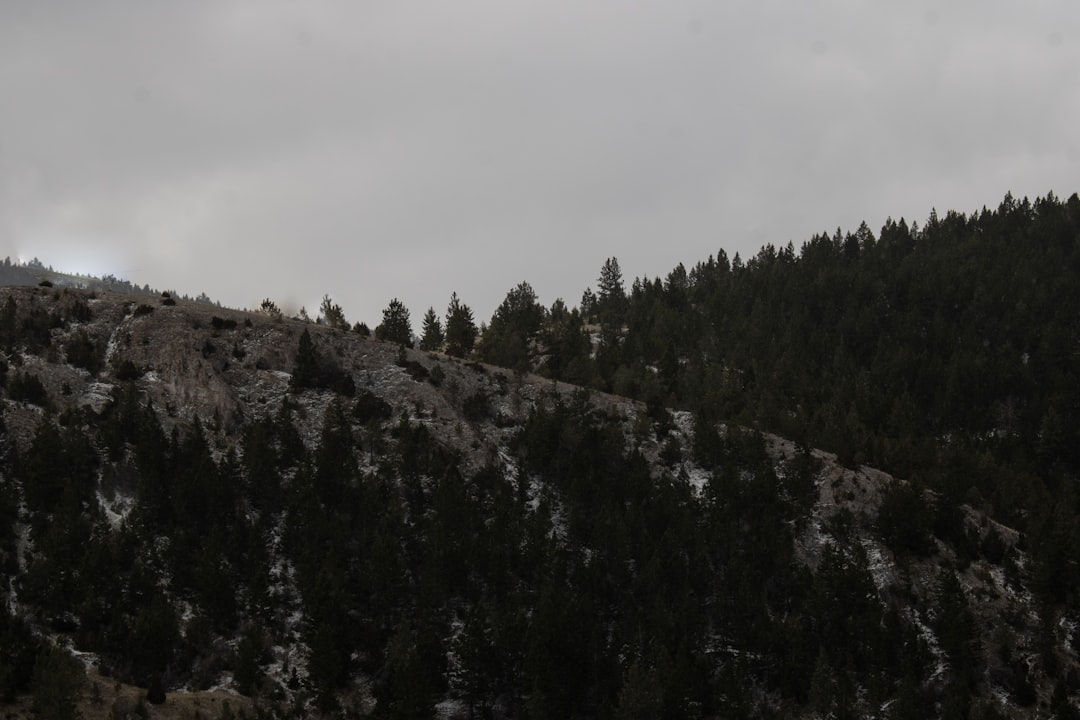The Rocky Mountains, a formidable range stretching over 3,000 miles from Canada to New Mexico, present a significant geographic challenge to those who seek to traverse them. This majestic mountain range is characterized by its rugged terrain, steep slopes, and high altitudes, which can reach over 14,000 feet in some areas. The sheer scale and complexity of the Rockies create natural barriers that have historically hindered movement and exploration.
The diverse ecosystems found within the mountains further complicate navigation, as dense forests, alpine meadows, and glacial lakes can obscure paths and create unpredictable conditions. Moreover, the Rockies are not merely a physical obstacle; they also influence weather patterns and climate. The mountains act as a barrier to moisture-laden winds, resulting in varied climates on either side of the range.
This phenomenon can lead to sudden weather changes, including snowstorms and heavy rainfall, which can catch travelers unprepared. The combination of altitude sickness, treacherous trails, and unpredictable weather makes crossing the Rockies a daunting task for even the most seasoned adventurers.
Key Takeaways
- The Rocky Mountains present a formidable geographic challenge due to their rugged terrain and high elevation.
- Historical attempts to cross the Rockies have been met with significant challenges, including harsh weather and difficult terrain.
- Climate and weather play a significant role in the difficulty of crossing the Rockies, with snow, ice, and storms posing major obstacles.
- Technology has played a crucial role in overcoming the challenges of the Rocky Mountains, including the development of transportation and communication infrastructure.
- Supply lines are of utmost importance in mountainous terrain, as the difficult geography makes it challenging to transport goods and resources.
Historical Attempts to Cross the Rocky Mountains
Throughout history, numerous explorers and settlers have attempted to cross the Rocky Mountains, each facing unique challenges and obstacles. One of the earliest recorded attempts was made by the Lewis and Clark Expedition in the early 19th century. Commissioned by President Thomas Jefferson, this expedition sought to map the newly acquired western territories of the United States.
The team faced immense difficulties as they navigated through the rugged terrain of the Rockies, battling harsh weather conditions and treacherous landscapes. Their journey not only provided valuable information about the geography of the region but also highlighted the resilience required to conquer such formidable natural barriers. In addition to Lewis and Clark, many pioneers followed in their footsteps during the westward expansion of the United States.
The Oregon Trail, for instance, became a vital route for settlers seeking new opportunities in the West. However, crossing the Rockies was fraught with peril. Many travelers faced illness, starvation, and even death as they navigated through the mountains.
The historical accounts of these journeys reveal not only the physical challenges but also the determination and spirit of those who sought to forge new paths across this majestic yet unforgiving landscape.
The Impact of Climate and Weather on Crossing the Rockies

The climate and weather conditions in the Rocky Mountains play a crucial role in determining the feasibility of crossing this vast range. The region experiences a wide range of temperatures and precipitation levels, which can vary dramatically depending on altitude and location. In summer, temperatures can soar during the day but plummet at night, while winter brings heavy snowfall that can block trails and create avalanche risks.
These fluctuations pose significant challenges for anyone attempting to traverse the mountains. Moreover, sudden weather changes can occur without warning in the Rockies. A clear sky can quickly turn into a snowstorm or torrential rain, making navigation treacherous.
Historical accounts are replete with stories of travelers caught off guard by these rapid shifts in weather, leading to dire consequences. The impact of climate on crossing the Rockies extends beyond immediate dangers; it also affects planning and preparation. Understanding seasonal patterns is essential for anyone attempting to navigate this formidable terrain, as timing can mean the difference between success and failure.
The Role of Technology in Overcoming the Rocky Mountains
| Technology | Impact |
|---|---|
| Railroads | Enabled faster transportation of goods and people across the mountains |
| Telegraph | Improved communication and coordination for construction and trade |
| Steam-powered machinery | Facilitated construction of infrastructure such as tunnels and roads |
| GPS and mapping technology | Assisted in planning and navigating routes through the rugged terrain |
Advancements in technology have played a pivotal role in overcoming the challenges posed by the Rocky Mountains. From early exploration to modern transportation methods, innovations have continually transformed how individuals and goods traverse this rugged terrain. In the 19th century, the introduction of railroads revolutionized travel across the Rockies.
The completion of the Transcontinental Railroad in 1869 marked a significant milestone in American history, allowing for faster and more efficient movement of people and resources across vast distances. In contemporary times, technology continues to enhance navigation and safety in mountainous regions. GPS systems provide real-time location tracking, enabling travelers to navigate complex trails with greater confidence.
Additionally, advancements in outdoor gear—such as lightweight tents, high-performance clothing, and specialized climbing equipment—have made it easier for adventurers to tackle the challenges posed by altitude and weather conditions. These technological innovations not only facilitate crossing but also enhance safety measures for those who dare to explore the Rockies.
The Importance of Supply Lines in Mountainous Terrain
In mountainous terrain like the Rocky Mountains, establishing reliable supply lines is crucial for successful navigation and survival. Historically, explorers and settlers had to carefully plan their routes to ensure access to food, water, and other essential resources. The scarcity of these supplies in remote areas often dictated travel schedules and routes taken.
For instance, many pioneers relied on rivers or established trading posts as lifelines during their journeys through the Rockies. In military campaigns as well, supply lines are vital for sustaining operations in challenging environments. Troops require consistent access to food, ammunition, medical supplies, and equipment to maintain their effectiveness.
The rugged terrain of the Rockies complicates logistics significantly; transporting goods through narrow passes or steep inclines requires careful planning and execution. Failure to secure adequate supply lines can lead to disastrous consequences for both military forces and civilian travelers alike.
The Strategic Implications of the Rocky Mountains for Military Campaigns

The strategic implications of the Rocky Mountains have been significant throughout history, particularly during military campaigns. The mountains serve as both a natural barrier and a tactical advantage for those who understand how to navigate their complexities. For armies seeking to invade or defend territory, controlling mountain passes can be crucial for maintaining supply lines and troop movements.
The rugged terrain can also provide cover for ambushes or defensive positions against advancing forces. Moreover, the Rockies have historically influenced military strategies by dictating where battles are fought. Commanders must consider not only their own troop movements but also how the geography will affect their enemy’s capabilities.
The high altitudes and difficult terrain can hinder mobility and communication, making it essential for military leaders to adapt their tactics accordingly.
The Influence of Native American Resistance on Crossing the Rockies
The presence of Native American tribes in the Rocky Mountains has significantly influenced attempts to cross this formidable range throughout history. Indigenous peoples have inhabited these lands for thousands of years, developing deep knowledge of the terrain and its resources. As settlers and explorers sought to navigate through these mountains, they often encountered resistance from Native American tribes who were determined to protect their ancestral lands.
This resistance took many forms—ranging from direct confrontations to strategic alliances among tribes against common threats. For example, during westward expansion in the 19th century, various tribes banded together to resist encroachment by settlers. Their intimate understanding of the geography allowed them to utilize ambush tactics effectively against those attempting to cross their territories.
This dynamic not only complicated travel through the Rockies but also highlighted the importance of respecting indigenous knowledge when navigating such challenging landscapes.
The Psychological and Physical Toll of Mountain Warfare
Mountain warfare presents unique psychological and physical challenges that can take a toll on soldiers engaged in combat within such environments. The harsh conditions—ranging from extreme cold to high altitudes—can lead to fatigue, frostbite, and altitude sickness among troops. These physical challenges are compounded by psychological stressors such as isolation from support networks and constant vigilance against enemy attacks.
The mental strain associated with mountain warfare can be profound. Soldiers may experience heightened anxiety due to unpredictable weather conditions or treacherous terrain that complicates movement and communication. Additionally, prolonged exposure to harsh environments can lead to feelings of despair or hopelessness among troops who find themselves cut off from reinforcements or supplies.
Understanding these psychological impacts is essential for military leaders seeking to maintain morale and effectiveness among their forces engaged in mountainous operations.
The Role of Geography in Shaping Military Tactics in Mountainous Terrain
Geography plays a critical role in shaping military tactics when operating in mountainous terrain like the Rocky Mountains.
For instance, high ground often provides a tactical advantage; thus, securing elevated positions becomes a priority for forces seeking dominance over an area.
Additionally, geography influences communication methods during operations in mountainous regions. Traditional forms of communication may be hindered by terrain features that obstruct signals or visibility between units. As a result, military leaders must adapt their tactics accordingly—utilizing smaller units for reconnaissance or employing alternative communication methods such as runners or signal flags when necessary.
By understanding how geography impacts military operations within mountainous environments, commanders can develop more effective strategies tailored to these unique challenges.
The Economic and Logistical Challenges of Crossing the Rockies
Crossing the Rocky Mountains poses significant economic and logistical challenges that have historically impacted trade routes and settlement patterns in North America. The costs associated with transporting goods over such rugged terrain can be prohibitive; maintaining roads or railways through steep inclines requires substantial investment in infrastructure development. Additionally, seasonal weather patterns can further complicate logistics by limiting access during certain times of year.
For early settlers seeking new opportunities in the West, these economic challenges often dictated their choices regarding routes taken or resources utilized during their journeys through the Rockies. Many pioneers relied on established trails that offered access to water sources or trading posts along their routes—factors that could make or break their success in reaching their destinations safely. Understanding these economic implications is essential for comprehending how geography shapes human behavior within mountainous regions.
The Legacy of Failed Attempts to Cross the Rocky Mountains
The legacy of failed attempts to cross the Rocky Mountains is woven into the fabric of American history—a testament to human perseverance against formidable natural barriers. Numerous expeditions have ended in tragedy due to harsh conditions or miscalculations regarding routes taken through this rugged terrain. These failures serve as cautionary tales that highlight both the risks involved in mountain exploration and the resilience required to overcome them.
Moreover, these historical failures have contributed significantly to our understanding of geography’s role in shaping human endeavors over time. Each unsuccessful attempt has provided valuable lessons regarding navigation techniques, resource management strategies, and environmental considerations necessary for successful crossings through challenging landscapes like those found within the Rockies. As such, they remind us that while nature may present daunting obstacles, it also offers opportunities for growth—both personally and collectively—as individuals strive toward new horizons despite adversity.
The Rocky Mountains have long been considered a formidable natural barrier, posing significant challenges to military movements. The rugged terrain, unpredictable weather, and high altitudes make it difficult for armies to navigate and sustain operations. An interesting article that delves into the geographical and historical reasons why armies have struggled to cross the Rocky Mountains can be found on MyGeoQuest. This article provides insights into the natural obstacles and strategic considerations that have historically deterred military campaigns in this region. For more detailed information, you can read the full article by visiting this link.
WATCH THIS! The Hidden Reason No One Can Invade America | A Geographical Analysis
FAQs
Why is it difficult for armies to cross the Rocky Mountains?
The Rocky Mountains are a major mountain range in North America, stretching over 3,000 miles from Canada to New Mexico. The rugged terrain, high elevations, and unpredictable weather make it extremely challenging for armies to navigate and cross the Rocky Mountains.
What are some specific challenges that armies face when trying to cross the Rocky Mountains?
Some specific challenges include steep and treacherous terrain, limited and difficult-to-navigate passes, extreme weather conditions, and the lack of infrastructure for large-scale military movements.
Have there been historical attempts to cross the Rocky Mountains by armies?
Yes, there have been historical attempts to cross the Rocky Mountains by armies, such as during the westward expansion of the United States and conflicts with Native American tribes. These attempts were often met with significant logistical and strategic challenges.
Are there alternative routes for armies to bypass the Rocky Mountains?
There are alternative routes, such as the use of mountain passes and valleys, but these routes still present significant challenges and may not be suitable for large military movements.
What are the implications of the difficulty in crossing the Rocky Mountains for military strategy?
The difficulty in crossing the Rocky Mountains has significant implications for military strategy, as it can limit the ability of armies to quickly and effectively move troops and supplies across the region. This can impact the ability to respond to threats and conduct military operations.
